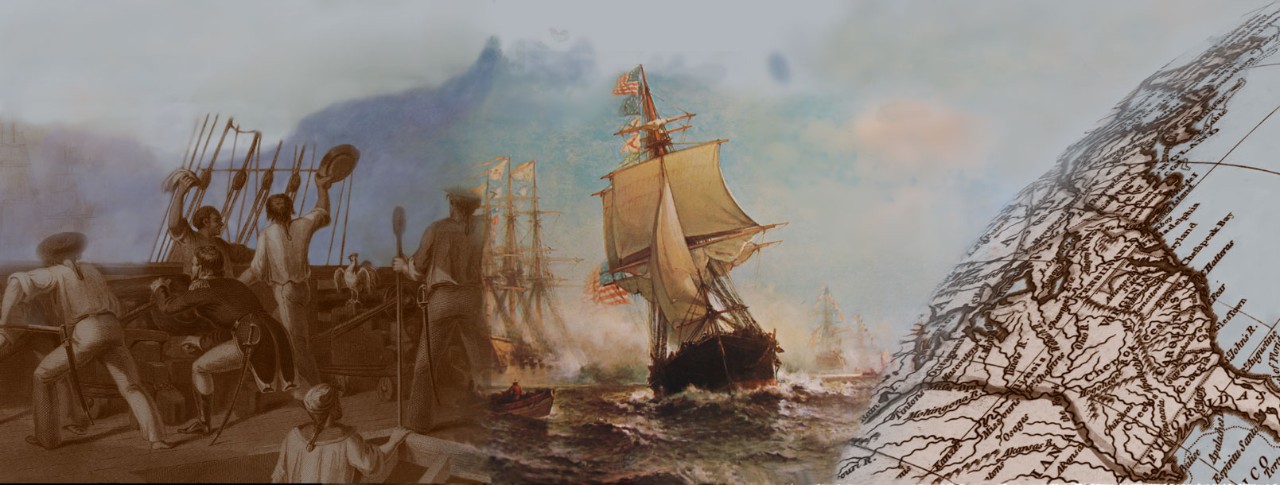
Anderson, Edwin A.
Rear Admiral Edwin A. Anderson, USN, (1860-1933)
Edwin Alexander Anderson was born on 16 July 1860 in Wilmington, North Carolina. He graduated from the U.S. Naval Academy in 1882. Two years' sea duty on the sloop of war Kearsarge and the gunboat Alliance was followed by promotion to Ensign in 1884 and service on USS Quinnebaug in European waters. From 1888 to 1896 he had survey and hydrographic assignments, among them a tour on the research steamer Albatross. Anderson attained the rank of Lieutenant (Junior Grade) in September 1894. In early 1897, he reported on board the cruiser Marblehead and was promoted to Lieutenant in March 1898. On 11 May 1898, during the Spanish-American War, he led the Marblehead boat parties that helped cut the communication cables off Cienfugos, Cuba. Later in the war Anderson delivered the Spanish vessel Adula to Savannah, Georgia, and in late 1898 and early 1899 commanded captured Spanish gunboats.
Lieutenant Anderson was next assigned to the Naval Torpedo Station at Newport, Rhode Island, and in 1901-1902 commanded USS Nashan. In 1903 he served in the Far East, commanding the former Spanish gunboats Don Juan de Austria and Isla de Cuba as well as reaching the rank of Lieutenant Commander. Tours at the Washington Navy Yard and on USS Pennsylvania followed. In 1906-1907 he led the Second Torpedo Flotilla and received promotion to Commander. After recruiting duty at Cincinnati, Ohio, service at the Mare Island Navy Yard, California, and command of the gunboat Yorktown, in July 1911 Anderson was promoted to Captain. He then commanded the battleships Iowa and New Hampshire. While in the latter ship, he participated the intervention at Vera Cruz, Mexico, leading the Second Seaman Regiment in combat ashore in April 1914. For his "extraordinary heroism in battle" at that time, he was awarded Medal of Honor.
Captain Anderson attended the Naval War College in 1915-1916 and was Supervisor of Naval Auxiliaries at Norfolk, Virgina from late 1916 into the first months of World War I. Temporarily promoted to Rear Admiral in May 1917, his performance as Commander, Patrol Squadron ONE was recognized with the award of the Distinguished Service Medal. His flag rank became permanent in November 1918 and was followed by assignments as commander of an Atlantic Fleet cruiser division and, from November 1919 to May 1922, as Commandant, Sixth Naval District, headquartered at Charleston, South Carolina. He became Commander in Chief, Asiatic Fleet in August 1922, with the temporary rank of Admiral. When a severe earthquake rocked Japan in September 1923, Anderson acted quickly, sending ships to help the devastated cities of Tokyo and Yokohama. A month later, Anderson returned to the United States and served in the Office of the Chief of Naval Operations until his retirement, as a Rear Admiral, in March 1924. Edwin A. Anderson died on 23 September 1933 at his home at Masonboro Sound, Wilmington, North Carolina and is buried at Arlington National Cemetary, Arlington, Virginia.
USS Anderson (DD-411), 1939-1946, was named in honor of Rear Admiral Edwin A. Anderson.
This page features the only image we have concerning Edwin A. Anderson.


